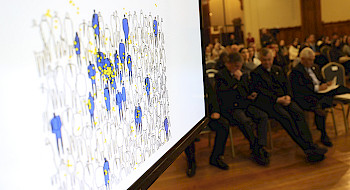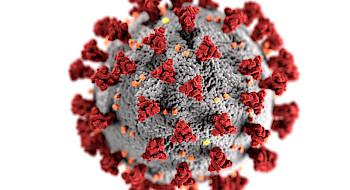
A painful public health problem
Over 10% of Chile's health care budget goes on treating chronic pain, which is the equivalent of the country's total yearly research investment, including prevention and reduction. That's why understanding how pain is caused is key to reducing or preventing it.
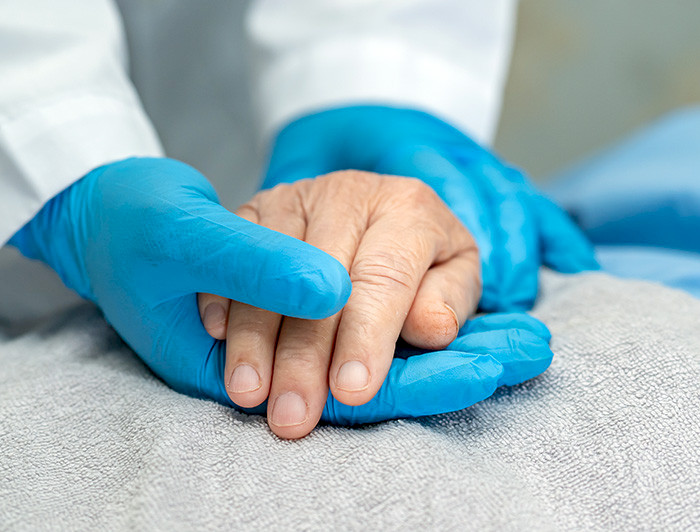
photo_camera With suboptimal drugs and integrated treatments with good results but restricted access, pain is a public health problem; but in order to address it, research is needed to understand its mechanisms in order to relieve it efficiently, which is exactly the goal of MiNusPain. (Photo: iStock)
According to Vargas et al., 2018, one third of the adult population suffers from chronic pain, otherwise known as pain that lasts more than three months.
Understanding how pain is caused is key to reducing or preventing it. This is precisely the mission of the Millennium Nucleus for the Study of Pain (MiNuSPain), which is led by UC Chile, committed to addressing this issue by bringing together professionals from different disciplines.
The fact that one third of the adult population suffers from some form of chronic pain, the best-selling drugs, by far, are those that aim to relieve pain: first are painkillers, with paracetamol topping the list, and followed by anti-inflammatory drugs
The problem is that we have not been able to relieve pain.
"The medications we have are not ideal," noted Margarita Calvo, professor from the Faculty of Biological Sciences at UC Chile. ‘One in six patients with neuropathic pain are able to reduce the pain with medication, but only by 30% to 50%,’ she explained.
However, ‘if patients are given an integrated treatment in a pain unit, it is generally successful. But there are few pain units in the world and they are not very accessible to the general population,‘ she added.
Margareta Calvo is an expert in her field. She has been interested in the subject since her early days as a physician. ‘When I started my training, very little was known about it, it was not something that was taught,’ she recalled. In Milan, she obtained her master's degree in pain management and peripheral nervous system, followed by her PhD and postdoc at King's College London and Oxford University, where she studied the role of the immune system and clinically relevant models of neuropathic pain.
‘I am currently interested in understanding how damage to the most distal endings of sensory neurons, the intraepidermal fibres, can lead to neuropathic pain,’ she explained. Her research has been applied to the Faculty of Biological Sciences' physiology department, as well as the UC Christus Health Network's Pain Management Network Unit.
Understanding the Mechanisms of Pain
The first thing you need to do in order to relieve pain is to understand it.
The Millennium Nucleus for the Study of Pain (MiNusPain) was founded to investigate the cellular and molecular basis of pain. Margarita Calvo is leading the effort, which brings together faculty and researchers (who study the subject from different areas, both from biomedical and clinical sciences) from five Chilean universities: Universidad Católica, Universidad de Chile, Universidad de Santiago, Universidad Católica del Norte and Universidad de Concepción.
Elías Utreras, alternate director of MiNusPain and professor of the Faculty of Sciences of Universidad de Chile, explained: ‘The first thing we do is basic research, to try to understand the cellular mechanisms, and the molecules and proteins involved in all the processes that are related to the sensation of pain, whether in sensory neurons or others. Once we have a good understanding of how a system works, or the signalling pathways that are important in the process, it is possible to block it, increase it or decrease it. And that's where the development of new drugs or therapies comes in.”
Rodolfo Madrid, a professor at the Faculty of Chemistry and Biology of Universidad de Santiago, added: ‘In the Nucleus we are interested in chronic pain and specifically in neuropathic pain. We are talking about a condition of debilitating chronic pain, in which the person cannot function for themselves or socially. It is a very complex problem.’
‘We know that there are many molecular entities involved in pain signalling, both in physiological and pathological conditions. But we still have many unanswered questions. We need to understand exactly what is happening at the molecular level, so that we have more tools to create future therapies that are much more specific and efficient,’ added the researcher.
In order to answer these questions, interdisciplinary research is vital. ‘The Nucleus is made up of different laboratories from various universities, with different expertise and points of view, with access to patients on the one hand, and to cutting-edge techniques in molecular biology, electrophysiology, cell culture, etc., on the other. In a way, we have joined forces to begin a story, because although we have been collaborating with each other and working together for a long time, we are just getting started," said Rodolfo Madrid.
Training Specialists
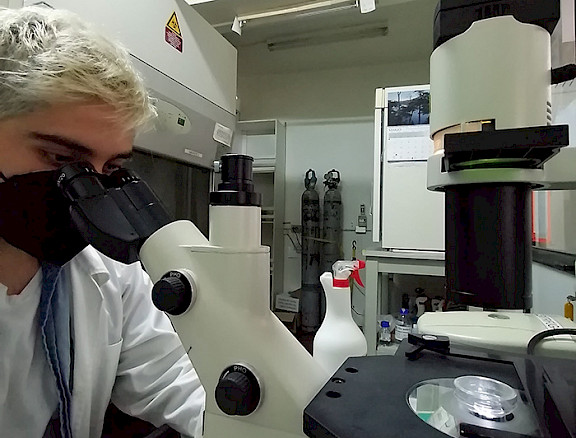
In Chile, there are few people who study pain. According to Professor Calvo, "it is very critical that we train new scientists to work in this area,’ and for students to become familiar with chronic pain at the undergraduate level, in various study programs such as Medicine, Kinesiology, Nursing, Biology, and Biochemistry.
"We have undergraduate, graduate and doctoral students, and we want to help those who are interested in this topic to build their scientific career. The idea is for them to work collaboratively with our laboratories. We will support them so that they can gather data and find their own lines of research in chronic pain,” added the researcher.
As Elias Utreras explained:
‘We have a lot of students coming to our labs looking for research units, degree seminars, undergraduate, master's and doctoral theses. As we work in the field of pain research in different areas, we try to incorporate all of them [students] in the study of pain at the molecular and cellular level, because later they will work on a thesis, maybe they will do a postgraduate course, and there is a possibility that they can take a postgraduate course with our international collaborators, because there are always open competitions... This is a platform that we are creating for people so they can further their study of this topic and then return to their country to continue researching, so that this grows."
Science in Everyday Life
"We live in a society where people’s knowledge in biology and medicine is very, very scarce. Learning from your body, how you feel, how you experience the external world, must be something you know by heart. You have to know roughly what a cell is and how it works, what light is made of, how we can detect heat, cold, why it hurts when you hit your finger with a hammer... these are day-to-day things," said Rodolfo Madrid.
As part of the dissemination projects, a card game that teaches which neurons are the components of the somatosensory system, which detects environmental stimuli, as well as the molecular components of pain has been developed. These concepts have been conveyed in a playful manner to aim the initiative towards schools.
Another target audience are the patients suffering from chronic pain. That is why the Christus UC Health Network created a campaign aimed at people suffering from fibromyalgia. Through videos, talks and online seminars, they explain the mechanisms of pain, why it hurts and what to do to manage pain in general. It is hoped that the same can be done for other diseases, such as neuropathies.
A Growing Network
Internationally, there are few trained pain specialists. There are more than 7,000 professionals working in 125 countries involved in the study and treatment of pain, and the International Association for the Study of Pain (IASP) promotes collaborations and links with laboratories and hospitals around the world. "Being part of this network gives us access to many places," said Margarita Calvo, who is the association's only Latin American advisor.
She added: "Our funds are always smaller, so it's a constraint. The situation is much different in Europe. And we have fewer people. But with what we have, we conduct research at the same level as other countries around the world."
"We were all lucky enough to do our postdocs abroad and that means we also had the chance to connect with many other labs. We have been forming a network of professionals and laboratories in the United States, England, Switzerland, Germany -Europe in general-, and in Latin America, with countries such as Argentina and Brazil. The idea is that this will continue to grow into a synergy that is bigger than what we could have done separately in our own laboratories," said Rodolfo Madrid.
National Issue
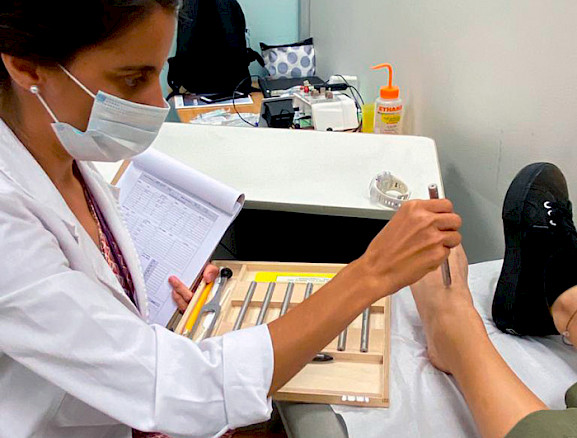
"I see patients with chronic pain and I really want to be able to help them, to have new treatments and make progress. And I love research, it's fun, you're always thinking, it's challenging. We have a big problem that we have to solve," said Margarita Calvo.
And as her colleague Rodolfo Madrid added: "This has never been a job for me; I feel privileged to be able to do what I enjoy, which is to study how neurons work and how we feel."
The challenge at the national level is great. "The goal is to strengthen pain units in public hospitals, so that people have access to a specialist. Bringing it to the forefront as a global problem. Based on how dismal the treatments are, basic research makes sense, especially when it is combined with clinical research," said Madrid.
As the director of MiNusPain concluded:
"In the future, I would like for us to establish a lot of collaborations, to have a lot of PhD students and postdocs who are rotating in labs, working on common projects, so that we publish good papers together. There should also be greater recognition of the problem of pain in society in general. And to have a lot of new young people contributing with their work and ideas.”



